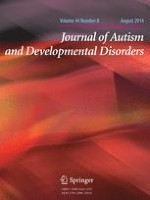01-08-2014 | Original Paper
Cognitive, Adaptive, and Psychosocial Differences Between High Ability Youth With and Without Autism Spectrum Disorder
Gepubliceerd in: Journal of Autism and Developmental Disorders | Uitgave 8/2014
Log in om toegang te krijgenAbstract
Research on Autism Spectrum Disorder (ASD) is thriving; however, scant empirical research has investigated how ASD manifests in high ability youth. Further research is necessary to accurately differentiate high ability students with ASD from those without the disorder, and thus decrease the risk of misdiagnosis. The purpose of the present study is to provide an empirical account of the intellectual, adaptive, and psychosocial functioning of high ability youth with and without ASD utilizing a group study design. Forty youth with high cognitive ability and ASD and a control group of 41 youth with high cognitive ability and no psychological diagnosis were included in the study. In comparison to the control group, the ASD group showed poorer functioning on measures of processing speed, adaptive skills, and broad psychological functioning, as perceived by parents and teachers. These findings have significant implications for diagnosing ASD among those with high ability, and the development of related psychological and educational interventions to address talent domains and areas of concern.
